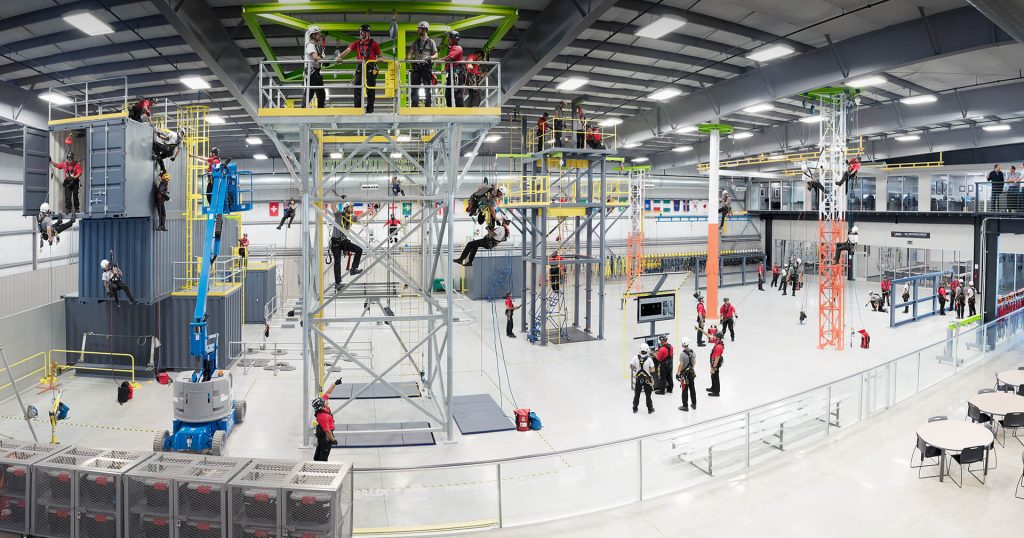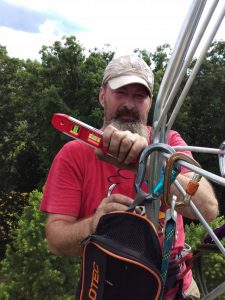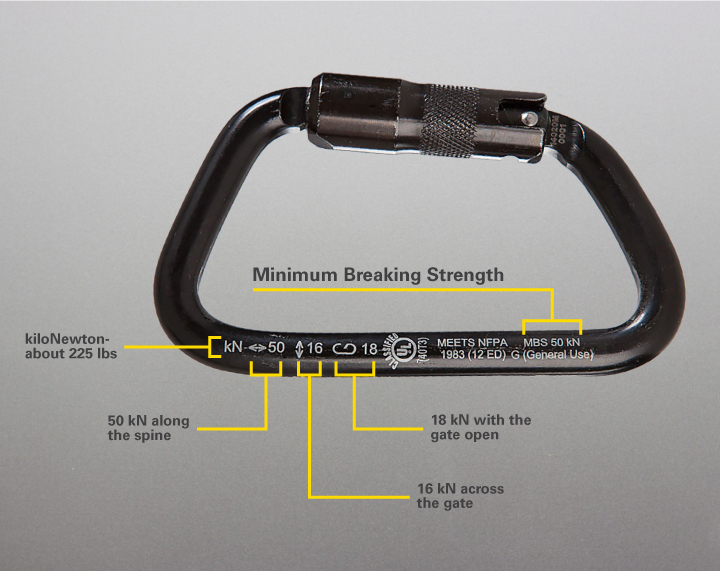Nestled between the mountains of the Olympic Peninsula, hidden behind the raging everlasting Tacoma traffic jam and interrupted-service WA-State ferries, is the Viking town of Poulsbo, WA. And in the outskirts of Poulsbo, in a large hangar, are the towers of Gravitec. I recently spent a week at Gravitec, learning to be a “competent tower climber and rescue” person. Being the contrarian that I am (yes Kim, I am looking at you for sticking me with this stigma) and not considering myself to be an incompetent tower climber before the course, I expected an arduous time being reeducated for all the things I do wrong with regards to tower climbing safety.

Picture of the Gravitec training facility in Poulsbo, WA (https://gravitec.com/)
I was very positively surprised that it was not the case at all. The course was a mixture of exciting tower ascend/descend/rescue skills, drills and tool practices, and try-not-to-fall-asleep lectures on OSHA (https://www.osha.gov/) and ANSI (https://www.ansi.org/) standards. Interspersed with academically challenging (I am an academic, so challenge is a good thing) clearance calculations and other system design challenges. Contrary to my expectations (still looking at Kim), I learned that years of rock and tower climbing did serve me right and most of what we do on the tower is done safely and correctly. I did, however, learn that some of our equipment does not comply with the required standards.

Author working on a tower.
I learned how to interpret the small numbers and arrows that are printed on every carabiner and listed in the manuals of each piece of climbing safety equipment. (Raise your hand if you know what “<->8” means. If you see it on your carabiner, it’s a bad sign – see: Carabiner Markings and kN Rating section at the end of this blog). I now know what the required standards are, and how to confirm that every piece of equipment complies with Fall Protection Standards. Using the amazing accessory wall at Gravitec, I played with many alternative types of harnesses, helmets, lanyards, carabiners, ascenders… (shoutout for the full-body Petzl Astro harness) and came up with a minimal purchasing plan to upgrade my lab’s setup to be not only safe, but compliant. The best part of the course was learning new skills. I have never previously rescued anyone off a flux tower. That is a good thing. However, it was also very exciting to rescue a crash-test-dummy Rapunzel from the Gravitec tower. In fact, that was so much fun that I had to share it, and yesterday I have summoned all my research group to one of our towers, where I taught and practiced tower rescue with them, while making sure they knew how to use our new rescue kit and were familiar with our newly revised safety protocol.
The competent tower climber and rescue course at Gravitec improved my knowledge and skills as a person in charge of tower climbers. I feel much more competent now. You should all try it too! I will gladly take the class again (in fact, OSHA standards require completing it every two years…).
Carabiner Markings and kN Rating (courtesy of Gravitec website: https://gravitec.com/carabiners-snaphooks-kilonewtons/):
Proper fall protection equipment is designed to absorb the force that’s generated by a fall. Your carabiner comes with a certain rating of force it can withstand—usually marked in kN, or kiloNewton. 1 kiloNewton is equal to 224.8 pounds of force, so you can typically multiply the kN rating by 225 to get the rating in pounds.

Picture of a Carabiner and associated markings & kN rating (https://gravitec.com/)
The standard design requirement states that carabiners must maintain, at a minimum, 5,000 lbs (22.2kN) along the major axis and 3,600 lbs (16kN) across the gate. For a short-hand, look for the ANSI Z359.12 stamp on your carabiner.

No Comments
Be the first to start a conversation